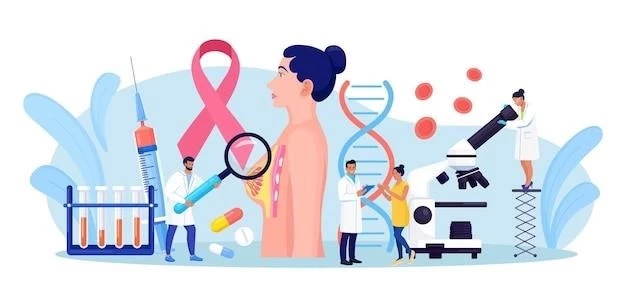Overview of Mutations in Estradiol Receptor
In metastatic hormone receptor-positive breast cancer, mutations in the estrogen receptor gene (ESR1) are acquired frequently, leading to resistance to endocrine therapies.
Introduction to ESR1 Mutations
Mutations in the estrogen receptor gene (ESR1) are frequent in metastatic hormone receptor-positive breast cancer, leading to acquired resistance to endocrine therapies. These mutations often localize to specific residues in the receptor’s hormone-binding domain and can emerge during treatment with constitutively activating effects, posing challenges to therapy efficacy. Furthermore, gene mutations can be induced by estrogen quinone metabolites, contributing to the complexity of understanding and treating ESR1 mutations in breast cancer.
Impact of ESR1 Mutations on Breast Cancer
ESR1 mutations in estrogen receptor-positive breast cancer are associated with resistance to endocrine therapies, impacting treatment efficacy.
Association of ESR1 Mutations with Endocrine Therapy Resistance
Mutations in the estrogen receptor gene (ESR1) often lead to endocrine therapy resistance in hormone receptor-positive breast cancer patients. These mutations, particularly at specific residues in the hormone-binding domain, can diminish the effectiveness of standard treatments, highlighting the importance of understanding their impact on disease progression.
Localization of Common Mutations in ESR1 Gene
Most mutations in the estrogen receptor (ESR1) gene are frequently found at specific residues near the C-terminal helix 12 of the hormone-binding domain٫ notably at leucine-536٫ tyrosine-537٫ and aspartate-538. These mutations play a significant role in endocrine therapy resistance in estrogen receptor-positive breast cancer patients.

Mechanisms of ESR1 Mutations
Gene mutations in ESR1 can be induced by estrogen quinone metabolites, impacting the hormone receptor’s function and contributing to therapy resistance in breast cancer.
Dimerization Effects of ESR1 Mutations
The Pro463 mutant induces transcription through its increased dimerization with the wild-type receptor. Dimerization plays a key role in the clonal evolution of ESR1 mutations during breast cancer progression and therapy resistance.
Induction of Gene Mutations by Estrogen Quinone Metabolites
In estrogen-induced studies, mutations have been observed in the DNA polymerase beta gene mRNA due to estrogen quinone metabolites. This mechanism contributes to the development of gene mutations and further complexity in understanding and treating ESR1 mutations in breast cancer.

Clinical Implications of ESR1 Mutations
ESR1 mutations in estrogen receptor-positive breast cancer pose therapeutic challenges٫ including endocrine therapy resistance and the emergence of constitutively activating mutations.
Emergence of Constitutively Activating Mutations during Endocrine Therapy
Constitutively activating mutations in the estrogen receptor alpha (ESR1) gene can arise during endocrine therapy for ER-positive breast cancer, leading to resistance to treatment and clinical challenges in managing patients.
Therapeutic Challenges Posed by ESR1 Mutations
Therapeutic challenges arise due to ESR1 mutations in estrogen receptor-positive breast cancer٫ particularly in rendering tumors resistant to traditional endocrine therapies. These mutations٫ including constitutively activating variants٫ necessitate innovative approaches to overcome treatment obstacles and improve patient outcomes.
Research and Development in ESR1 Mutations
Studies focus on understanding the impact of ESR1 mutations on therapy resistance٫ driving drug development efforts and exploring insights from preclinical models for effective treatment strategies.
Drug Development for ESR1 Mutations
Understanding the impact of ESR1 mutations on endocrine therapy resistance is driving targeted drug development efforts to enhance treatment strategies and overcome therapeutic challenges in ER-positive breast cancer patients.
Insights from Preclinical Models on ESR1 Mutation Responses
Preclinical models illustrate the molecular responses driven by estrogen receptor (ER) isoforms in various disease contexts, shedding light on potential therapeutic targets and strategies to mitigate endocrine therapy resistance.
